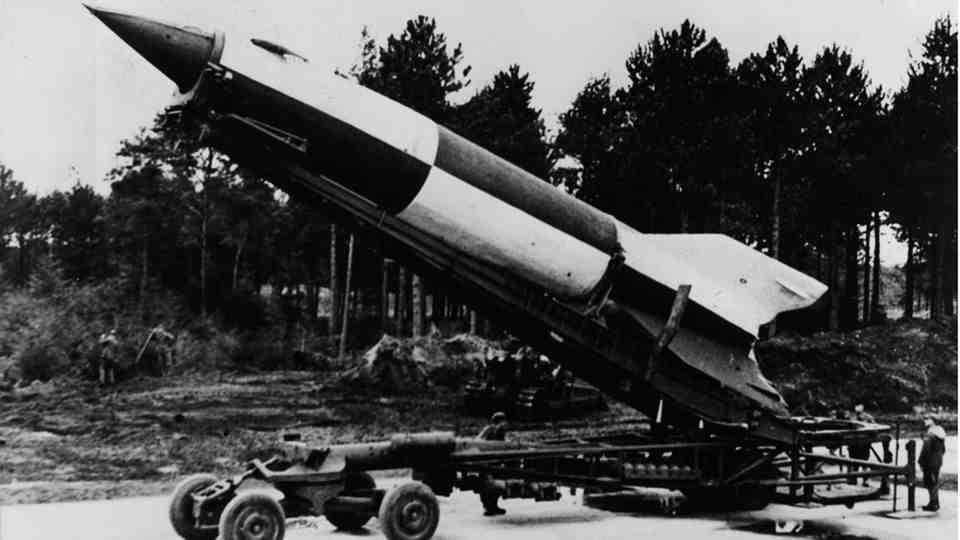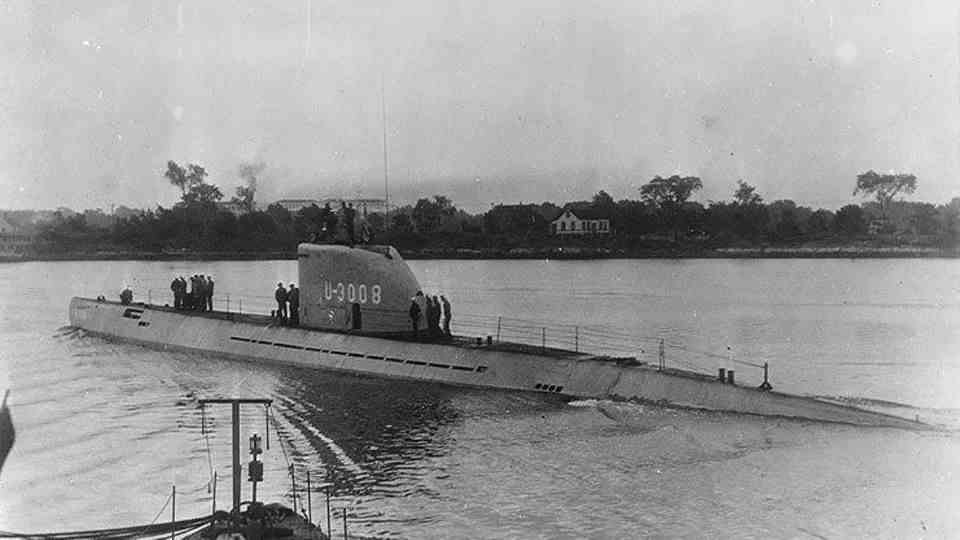FIESELER FI 103
V1 flying bomb – Hitler built the mother of all kamikaze drones
A V1 is brought to its launch pad.
© Commons
The Third Reich already used kamikaze drones. The V1 Flying Bomb is in many ways the forerunner of the modern Kamikazed drone. However, the models are far more dangerous today because they hit their target precisely.
At the latest after the defeat in Stalingrad and the failure of the major offensive in the Kursk bend in 1943, the war turned against Germany. The regime looked for a way out in the so-called miracle weapons – at that time still without any irony. Industrial production in the German Reich could never match that of the USA and the USSR. Superior technology should make up for inferiority in crowd. In fact, armaments were launched in a relatively short time that would later prove to be groundbreaking. This includes, for example, the world’s first fighter aircraft with jet engines, the Messerschmitt Me 262. There were also developments of rather dubious use such as the Me 163 rocket fighter and pure visions such as that of a stratospheric bomber – which primarily served to keep the designers from using it at the front to preserve.
Weapons of revenge against the Allied civilian population
Within the miracle weapons there were also the so-called “vengeance weapons” – they were intended to take revenge on the Allies, whose bombers reduced the Reich to rubble. The fact that Hitler himself had started the bombing campaign against cities was ignored. Another blind spot: These weapons were proof that the German Luftwaffe could hardly fly missions over enemy territory. Most famously, the V2 rocket is also known as the Aggregat A4. A rocket that climbed into the stratosphere and then fell back in a parabola, mostly on London. With the means at that time it was impossible to intercept such a weapon. All later military missiles are based on the V2. The rockets designed by Wernher von Braun later brought the US astronauts to the moon.
Opposite the technical marvel of the V2, the V1 flying bomb always looked like an ugly duckling. But the idea behind their construction is experiencing a renaissance in today’s kamikaze drones. In contrast to the V2, the flying bomb was extremely simple and cheaply constructed. Sure, she too had some kind of jet engine. But it was designed so simply that an average hobbyist could recreate the drive today.
Simple drive
The actual designation is Fieseler Fi 103 – the handy “V” for revenge weapon was later invented by Minister of Propaganda Goebbels. The bomb carried nearly a ton of explosives and was shaped like an airplane. The conspicuous pulse jet engine sat above the fuselage. This engine and the lack of a cockpit gave the flying bomb its typical appearance. It was not possible to take off regularly without a pilot. The flying bombs were therefore fired from a catapult rail – once in the air they flew towards their target. Because they depended on the launch pad, they were easily countered later. Even though the facilities were bunkered, the Allies destroyed the access roads used to bring in the heavy bombs.
The V1 didn’t have a controller like today’s drones, but it didn’t fly completely blind either. On board was a tracking device that could locate. The rudders could also be aligned via radio commands. However, this procedure was only sufficient for rough corrections. One cannot speak of accuracy. They were happy to be able to achieve an accuracy of two kilometers with a deployment distance of 400 kilometers.
In military terms, the flying bomb, with its kilometer-wide deviation, could not gain any significance. Ultimately, they could only be used for indiscriminate attacks on large cities, where they would then strike anywhere in the urban area. After all, 12,000 units were built for this purpose.
Easy to intercept
At the time, no one was able to intercept the V1, which fell to earth from almost space. The flying bomb, on the other hand, chugged towards its target at a low altitude. With a speed of 576 km/h, it was far faster than the heavy bombers of World War II but slower than fighter planes. As soon as the bombs were spotted or detected by radar, interceptors were sent to meet them. The British use their first Meteor fast jet fighters for this task.
The sluggish V1 could neither dodge nor defend itself in any way. The fighter planes therefore usually did not try to shoot down the bomb. They sit behind her and tap her wings as they fly by. With the Primitive Remote Control, the Germans don’t even notice the maneuver. They couldn’t make the spinning aircraft more stable. Usually the V1 then fell into the sea.
In addition to the basic idea, the modern kamikaze drones have taken over the inexpensive construction from the ancestor V1. The Shahed 136 should only cost around 20,000 euros.





